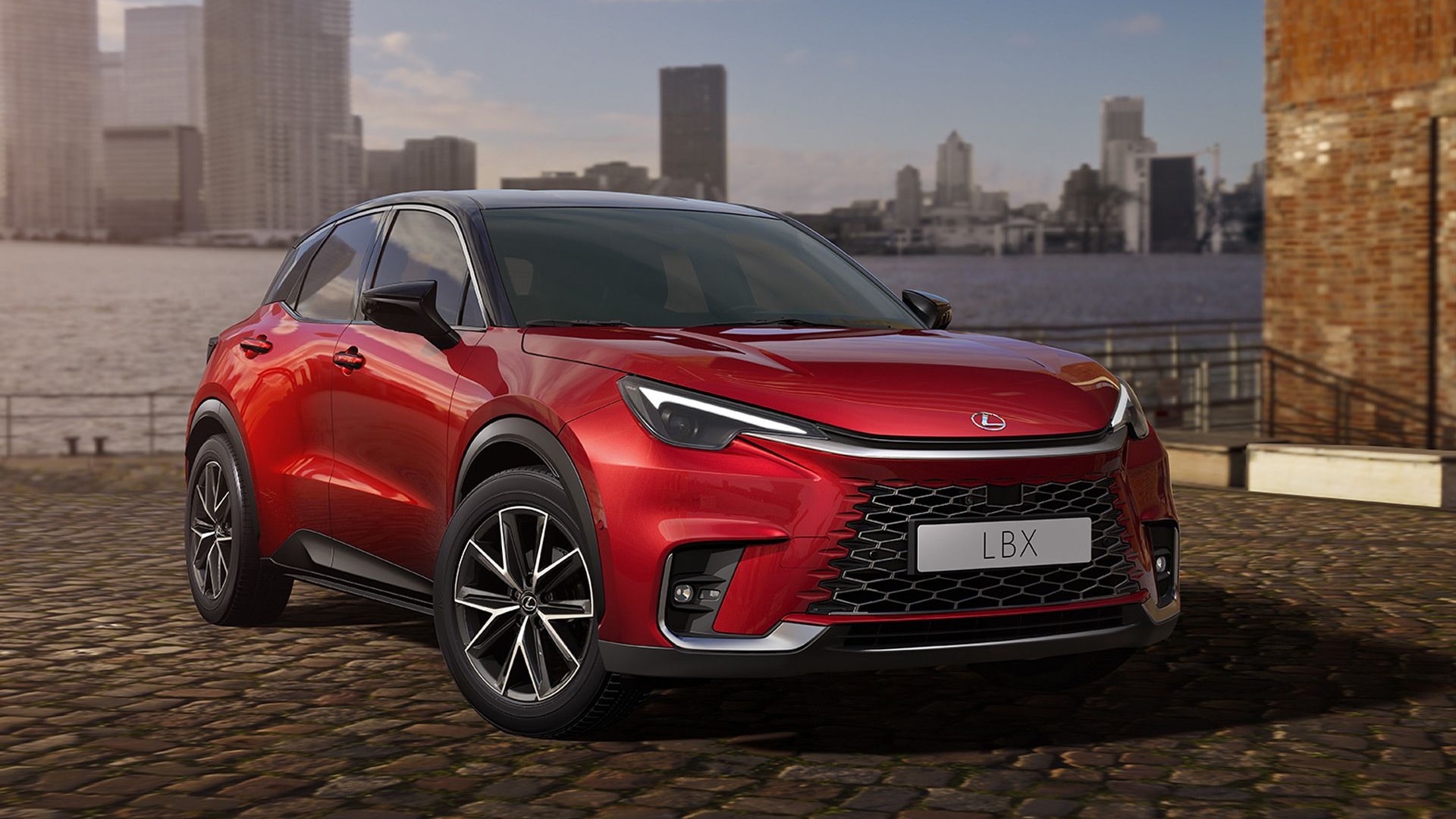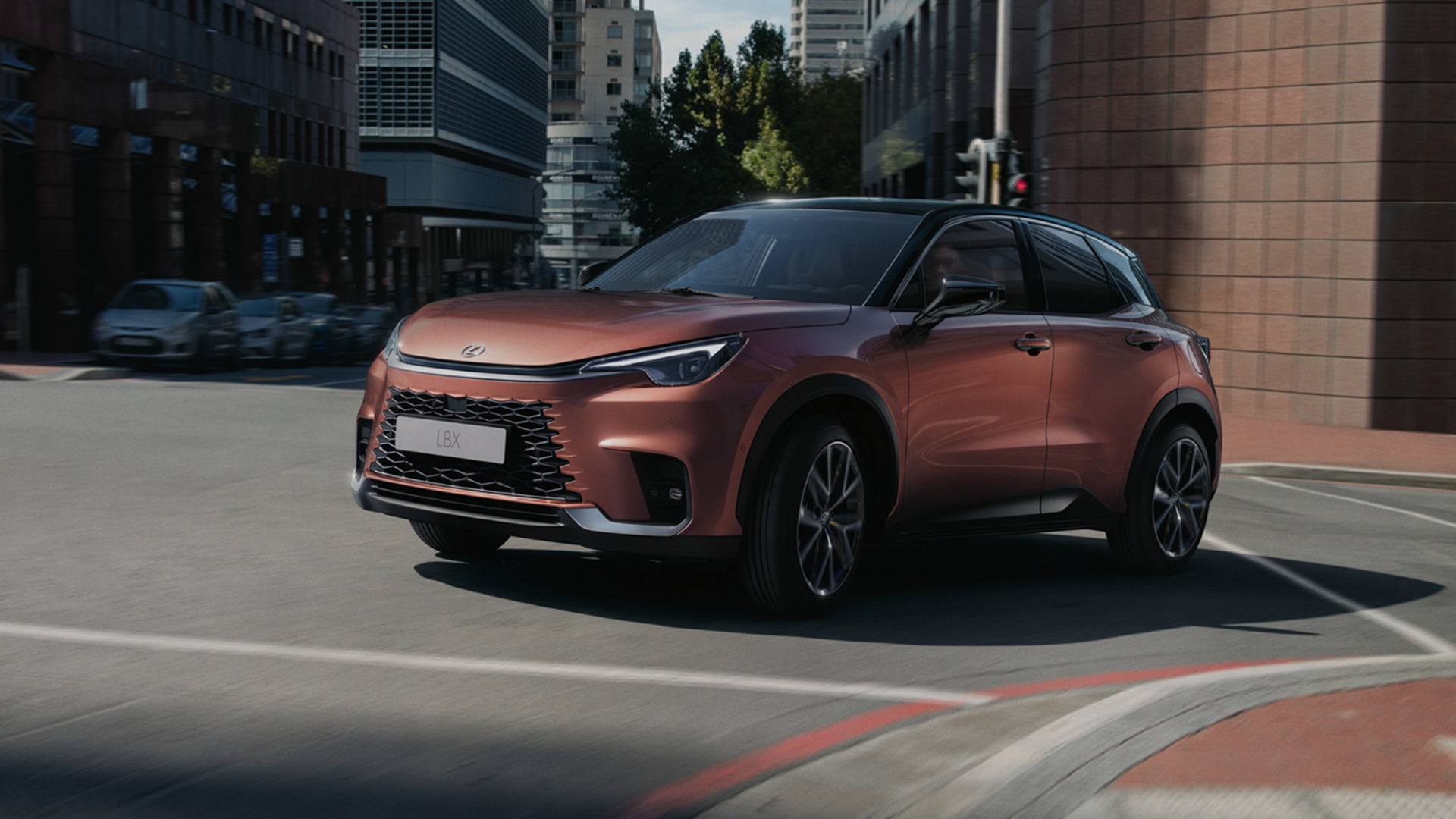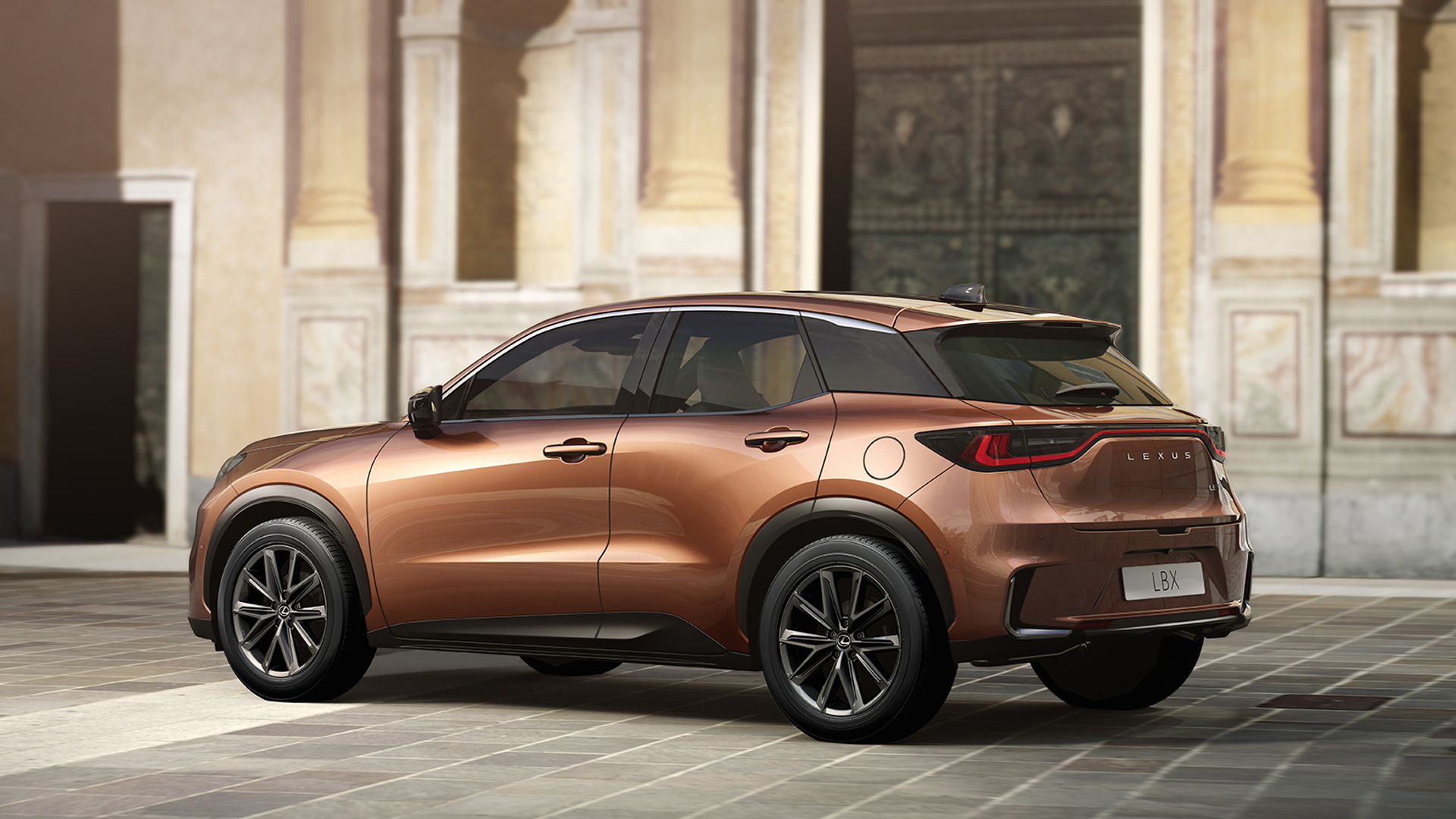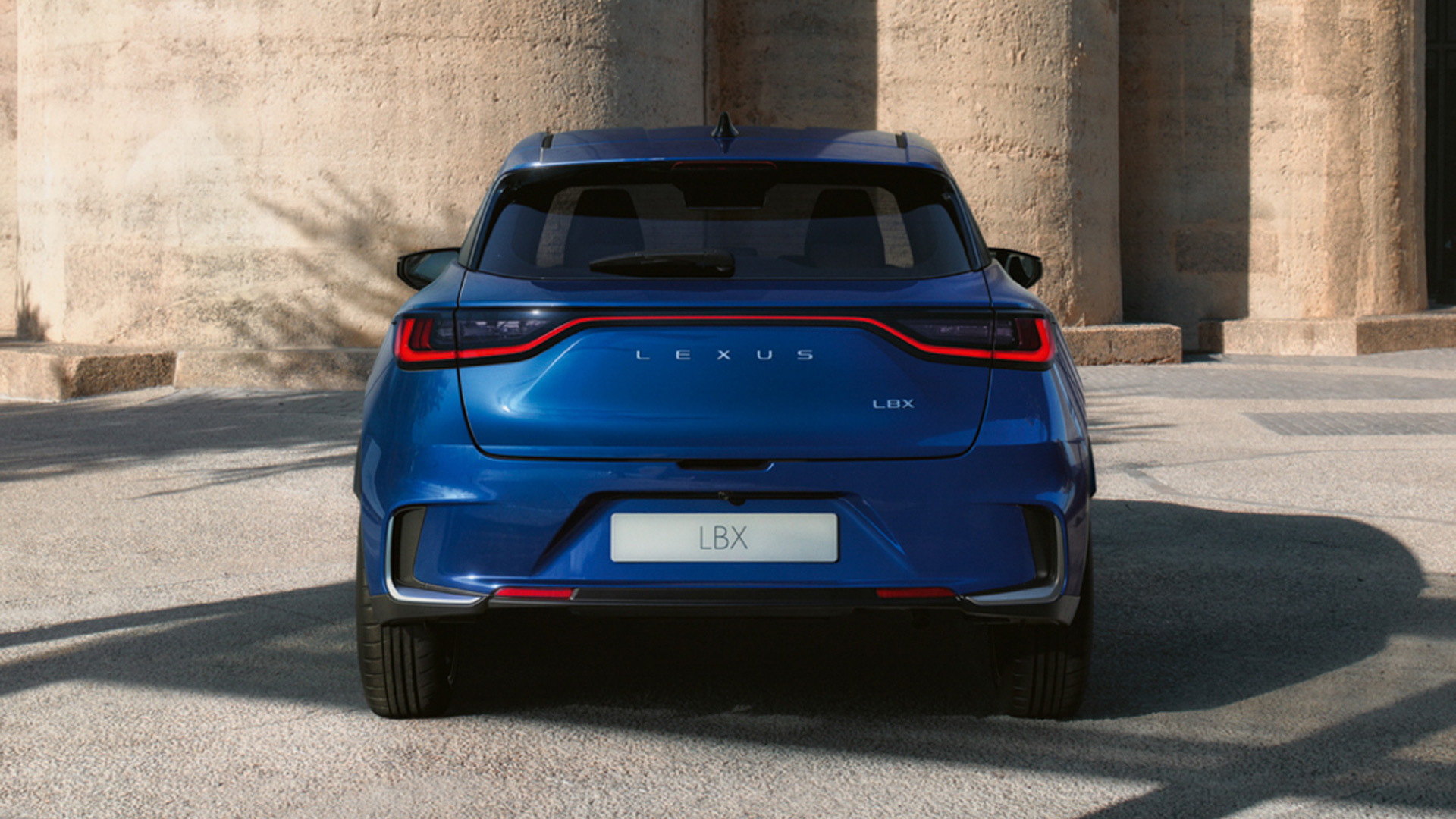Lexus on Monday revealed a hybrid subcompact crossover for the European and Japanese markets—one that's being marketed with the same controversial "self-charging" language that the Toyota luxury brand has used for hybrids in the past.
The 2024 Lexus LBX is the brand's smallest model yet. At 165 inches long, it's a foot shorter than the Lexus UX. That diminutive size means the LBX is unlikely to reach the U.S. It's based on the same TNGA-B platform as the Toyota Yaris Cross, another model not sold in the U.S.

2024 Lexus LBX (Europe spec)
The sole available powertrain combines a 1.5-liter inline-3 with a single electric motor for a total system output of 134 hp sent to the front wheels. The press release describes this powertrain as "a new-generation self-charging Lexus hybrid electric system."
The "self-charging" term has been used by Lexus in Europe and other markets as a way to pitch hybrids against EVs, the argument being that hybrids offer some degree of electrification without the hassle of plugging in. It's also a recipe for confusion, so much so that it inspired a regulatory crackdown in Norway—one of the friendliest countries for EVs.
Those regulators and consumer groups have seen the term as confusing, as it implies that it charges the battery through some other means like solar energy, inductive charging, etc., when it's simply running the gasoline engine more (and harnessing regen braking).

2024 Lexus LBX (Europe spec)
Prior to that, Lexus was using the phrase "always charged," which is much more straightforward. That was when Lexus was pitching its hybrids as alternatives to EVs.
Now that Lexus has some of EVs of its own—including the UX 300e being sold alongside the LBX in Europe—as well as the excellent NX 450h+ plug-in hybrid, "self-charging" is a confusing way to pitch a new hybrid model. If nothing else, some might confuse the LBX for an EV with automated charging—which is a different thing.
There's a lot of automated charging for EVs currently in test—this robotic EV charger in a Texas airport, for example. Is that closer to self-charging?


















